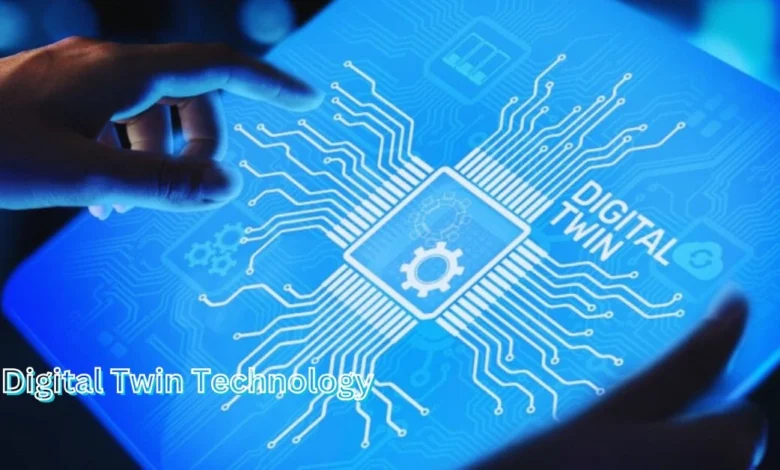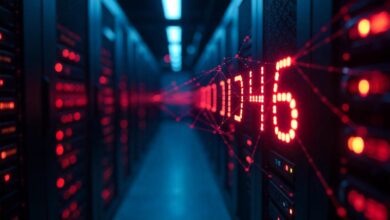Digital Twin Technology: Shaping Innovation

Introduction to Digital Twin Technology
In today’s fast-paced and technologically driven world, staying ahead of the curve is crucial for businesses to remain competitive. One groundbreaking innovation that has emerged as a game-changer is Digital Twin Technology. This cutting-edge concept leverages the power of digital simulations to revolutionize how industries monitor, analyze, and optimize their operations. By creating dynamic virtual replicas of physical assets, systems, or processes, digital twins bridge the gap between the physical and digital realms, paving the way for enhanced efficiency, sustainability, and innovation. As industries across the globe strive to become more adaptive and data-driven, digital twins are at the forefront of this transformation.
What is Digital Twin Technology?
Digital Twin Technology is a transformative innovation that involves creating virtual replicas of physical assets, systems, or processes. These digital models provide a real-time, data-driven representation of their physical counterparts, allowing businesses to monitor, analyze, and optimize operations efficiently. By bridging the physical and digital worlds, digital twins empower proactive innovation and precise problem-solving.
How Does Digital Twin Technology Work?
The technology operates through three key components:
- Physical Entity: The actual object or system being replicated.
- Digital Replica: A virtual model that mirrors the behavior and performance of the physical entity.
- Data Connectivity: Seamless data exchange between the physical and digital entities via IoT sensors and other sources.
This continuous data flow ensures that the digital twin reflects real-time changes and conditions, enabling accurate analysis and decision-making. Advanced analytics tools and artificial intelligence further enhance the capabilities of digital twins, allowing them to predict future scenarios and recommend optimal solutions.
Benefits of Digital Twin Technology
Enhanced Operational Efficiency
Digital twins streamline processes, reduce downtime, and boost productivity by providing actionable insights. Organizations can monitor performance metrics in real time, identify bottlenecks, and implement changes swiftly.
Predictive Maintenance
Real-time data analysis enables the prediction of equipment failures before they occur, minimizing disruptions. This proactive approach reduces maintenance costs and extends the lifespan of machinery.
Improved Product Design
Simulating and testing prototypes in virtual environments accelerates development cycles and reduces costs. Engineers can experiment with various designs and configurations to find the most efficient solutions.
Data-Driven Decision-Making
Simulations powered by data enhance decision-making with reduced risks and higher accuracy. Businesses can evaluate different strategies and scenarios to make informed choices.
Sustainability
Digital twins optimize resource utilization, reduce waste, and support global sustainability goals. By simulating environmental impacts, companies can develop eco-friendly solutions and minimize their carbon footprint.
Key Applications of Digital Twin Technology
1. Manufacturing
Digital twins enhance smart factories by enabling real-time monitoring of production lines, optimizing workflows, and improving quality control. Manufacturers can simulate production processes, identify inefficiencies, and implement corrective measures without disrupting operations.
2. Healthcare
In healthcare, digital twins model patient conditions to personalize treatments, predict outcomes, and refine medical devices. Hospitals and clinics can use digital twins to optimize patient care pathways and improve resource allocation.
3. Urban Planning
Cities use digital twins to simulate infrastructure changes, manage utilities, and plan sustainable urban developments. By modeling traffic patterns, energy consumption, and population growth, urban planners can create smarter, more resilient cities.
4. Automotive
Automakers rely on digital twins for testing vehicle performance, streamlining manufacturing processes, and enhancing driver safety features. Autonomous vehicle development also benefits significantly from digital twin simulations.
5. Aerospace
Digital twins monitor aircraft systems in real time, improve maintenance schedules, and ensure flight safety. They are also used in the design and testing of advanced aerospace technologies, reducing development costs and timelines.
6. Energy Sector
Digital twins are utilized to monitor and optimize energy grids, manage renewable energy sources, and enhance power plant performance. They enable energy providers to predict demand fluctuations and prevent outages.
7. Retail
Retailers are exploring digital twins to optimize store layouts, manage inventory, and improve customer experiences. Virtual models of retail spaces allow businesses to test different strategies and identify the most effective solutions.
Challenges in Implementing Digital Twin Technology
Despite its numerous advantages, implementing digital twin technology presents challenges:
- Data Security: Protecting sensitive data from cyber threats is paramount. Organizations must implement robust cybersecurity measures to safeguard their systems.
- High Implementation Costs: The initial investment in sensors, software, and infrastructure can be substantial. However, the long-term benefits often justify the expenditure.
- Complexity: Integrating diverse data sources and ensuring system interoperability requires expertise. Businesses need to ensure that their digital twin systems are scalable and adaptable to changing requirements.
- Skill Gap: Organizations need trained professionals to design and manage digital twins effectively. Investing in workforce training and development is crucial for successful implementation.
Future Trends in Digital Twin Technology
- Integration with AI and Machine Learning: Combining digital twins with AI improves predictive analytics and decision-making. Machine learning algorithms can analyze vast amounts of data to uncover patterns and insights that were previously inaccessible.
- Expansion into Emerging Industries: Beyond traditional sectors, industries like retail, education, and entertainment are exploring digital twin applications. Virtual replicas of learning environments, for example, can enhance educational outcomes.
- Enhanced Visualization: Advances in AR and VR technologies make digital twins more interactive and user-friendly. Immersive experiences allow stakeholders to engage with digital twins in new and innovative ways.
- IoT Evolution: The growth of IoT devices will continue to drive the adoption of digital twins. As more devices become interconnected, the potential for creating detailed and accurate digital replicas will expand.
- Sustainability Focus: With increasing emphasis on sustainability, digital twins will play a critical role in optimizing resource use and minimizing environmental impact.
Getting Started with Digital Twin Technology
To implement digital twin technology successfully, follow these steps:
- Define Objectives: Determine what you aim to achieve, whether it’s optimizing operations or improving customer experiences.
- Identify Assets: Choose the physical assets or systems to replicate digitally.
- Invest in the Right Tools: Select platforms and tools that support digital twin development and deployment.
- Develop Expertise: Train your team or partner with experts to design and manage digital twins effectively.
- Continuous Improvement: Monitor performance, analyze data, and refine the digital twin for optimal outcomes. Regular updates and maintenance ensure that the digital twin remains relevant and effective.
FAQ: Digital Twin Technology
1: What industries benefit most from digital twin technology?
Manufacturing, healthcare, automotive, urban planning, aerospace, energy, and retail are among the top industries leveraging digital twins.
2: Is digital twin technology expensive?
While initial costs can be significant, the long-term benefits in efficiency and cost savings often outweigh the investment.
3: How is data security maintained in digital twin systems?
Implementing robust cybersecurity measures, including encryption and access controls, helps protect data integrity.
4: Can small businesses adopt digital twin technology?
Yes, with scalable and cloud-based solutions, small businesses can leverage digital twins effectively without extensive upfront costs.
Q: What role does IoT play in digital twin technology?
IoT devices are critical for collecting real-time data that fuels the continuous synchronization between physical entities and their digital replicas.
Conclusion
Digital Twin Technology is reshaping industries by providing dynamic, data-driven insights and fostering innovation. By enabling organizations to simulate, monitor, and optimize processes in real time, digital twins offer a competitive edge in today’s fast-paced digital world. From manufacturing to healthcare and beyond, the potential applications of digital twins are vast and continually expanding. As the technology evolves, its role in achieving efficiency, sustainability, and growth will only become more prominent. Embracing digital twin technology is not just an option—it is a necessity for businesses looking to thrive in the digital age.
Explore the latest updates on silver prices with FintechZoom at TechyDaily:



